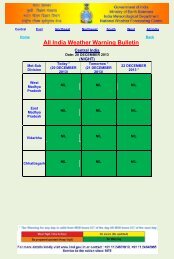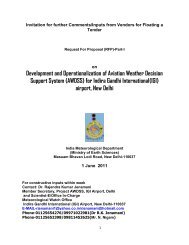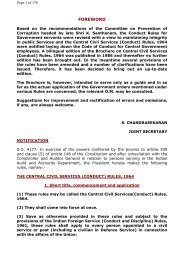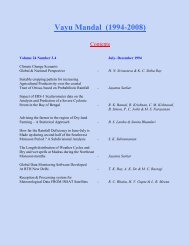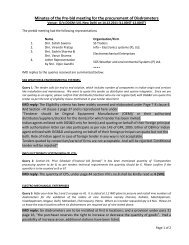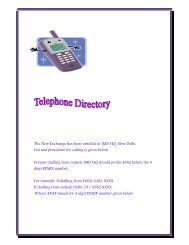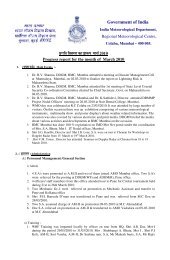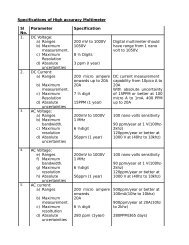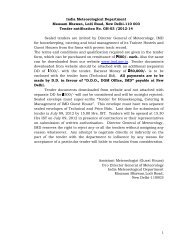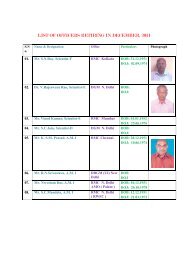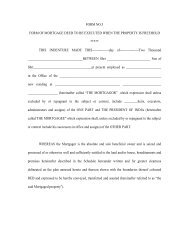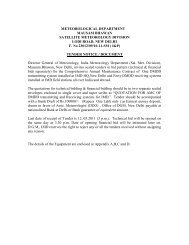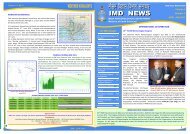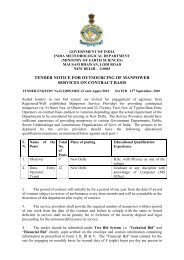Doppler Weather Radar - METNET - India Meteorological Department
Doppler Weather Radar - METNET - India Meteorological Department
Doppler Weather Radar - METNET - India Meteorological Department
Create successful ePaper yourself
Turn your PDF publications into a flip-book with our unique Google optimized e-Paper software.
Table D.1. PPI and RHI scanning types<br />
NOTE: Generally in meteorology, radars usually employ one of two or both following scanning<br />
techniques:<br />
Figure D.4. Plan Position Indicator<br />
Figure D.5. Range Height Indicator<br />
<strong>Radar</strong> Scanning in two orientations<br />
Plan Position Indicator (PPI): The radar holds it elevation angle constant but varies its<br />
azimuth angle. If the radar rotates through 360 degrees, the scan is called a “surveillance scan”.<br />
If the radar rotates through less than 360 degrees, the scan is called a “sector scan”. It’s good<br />
surveillance scan in operational setting. Plan Position Indicator scanning is shown in Figure.D.4<br />
Range Height Indicator (RHI): The radar holds its azimuth angle constant, but varies its<br />
elevation angle. The elevation normally is rotated from near the horizon to near the zenith (the<br />
point in the sky directly overhead). It’s good for determining the vertical structure of the storm.<br />
Range Height Indicator scanning is shown in Figure.D.5<br />
D.2. Scanning Strategies<br />
<strong>Doppler</strong> <strong>Weather</strong> <strong>Radar</strong>, being new generation radar incorporating digital, modular<br />
sophisticated technology, is capable of working in full automatic and continuous mode, 24 hours<br />
for 365 days. It probes the atmosphere according to the schedules/parameters defined to it. The<br />
parameters for scan are defined in its controlling workstation and are loaded in to the onboard<br />
computer of radar. The radar runs the same schedules and scans until it is stopped or modified.<br />
The DWRs network data in IMD is being used by forecasters to issue more accurate and<br />
effective weather forecast especially in Nowcasting.<br />
DWR scans are designed so as to suit the prevailing weather situations and data<br />
requirements. The scans done by radars should satisfy following needs in general:<br />
1. No important event/phenomena/happening in the atmosphere is missed<br />
81



